A lonely voice singing Lionel Richie’s Hello beckons from an answering machine. A tiny paper figure,carried by a charged wind current, eerily twirls alone. A spirit whispers from the beyond, captured on the grooves of a vinyl record. Pepto Bismol hued brains sit on stools, hungry, waiting.
Absorbing British artist Georgina Starr’s diverse body of work—now cov- ering three decades—is like touring a hall of mirrors. Spanning video, per- formance, sculpture, sound and drawing, Starr’s work has an openness that conjures the innocence of childhood, that dreamlike stage when the world is porous, where magic and the infinite are always at play. Always pres- ent is an impulse to give shape or voice to what is invisible or ephemeral, whether it’s a wind eddy or chance encounter. Reenactments and re-imag- inings are a common motif, and memory is often Starr’s source material. But the memory that is her material is not limited to the biographical; she also draws from collective memory, the cultural detritus that becomes affixed in our brains. The resulting material is thrillingly dense and self-referential.
Starr’s favorite line of Jacques’s monologue from Shakespeare’s As You Like It—the theme for Present Space’s inaugural issue—is “Seeking the bubble reputation.” This comes as no surprise. The bubble—as well as the breath and the brain—is a form Starr returns to time and time again, a permeable symbol that transforms and takes on new meaning. “It conjures some interesting imagery,” says Starr. “The Bubble’ is a motif I’ve been us- ing in a number of works over the last 10 years, so for me it’s a sculptur- al bubble of endless concave mirrors. In her book Speculum of the Other Woman, the philosopher Luce Irigaray talks about the idea of a feminine concave mirror—a mirror with a curved surface, which unlike the flat mirror of Lacanian ideology reflecting the male, would represent the inner speci- ficity of the female body.”

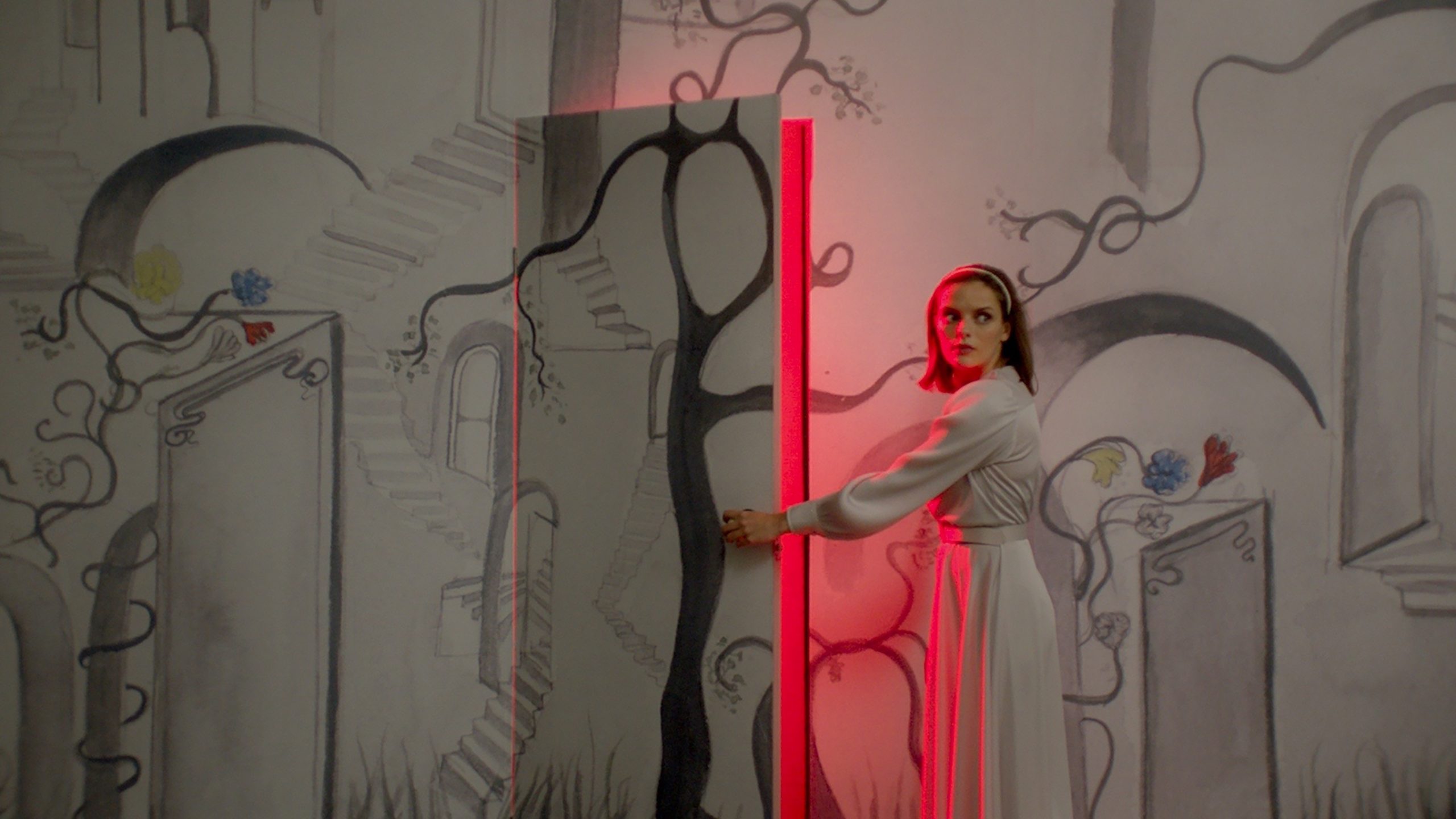
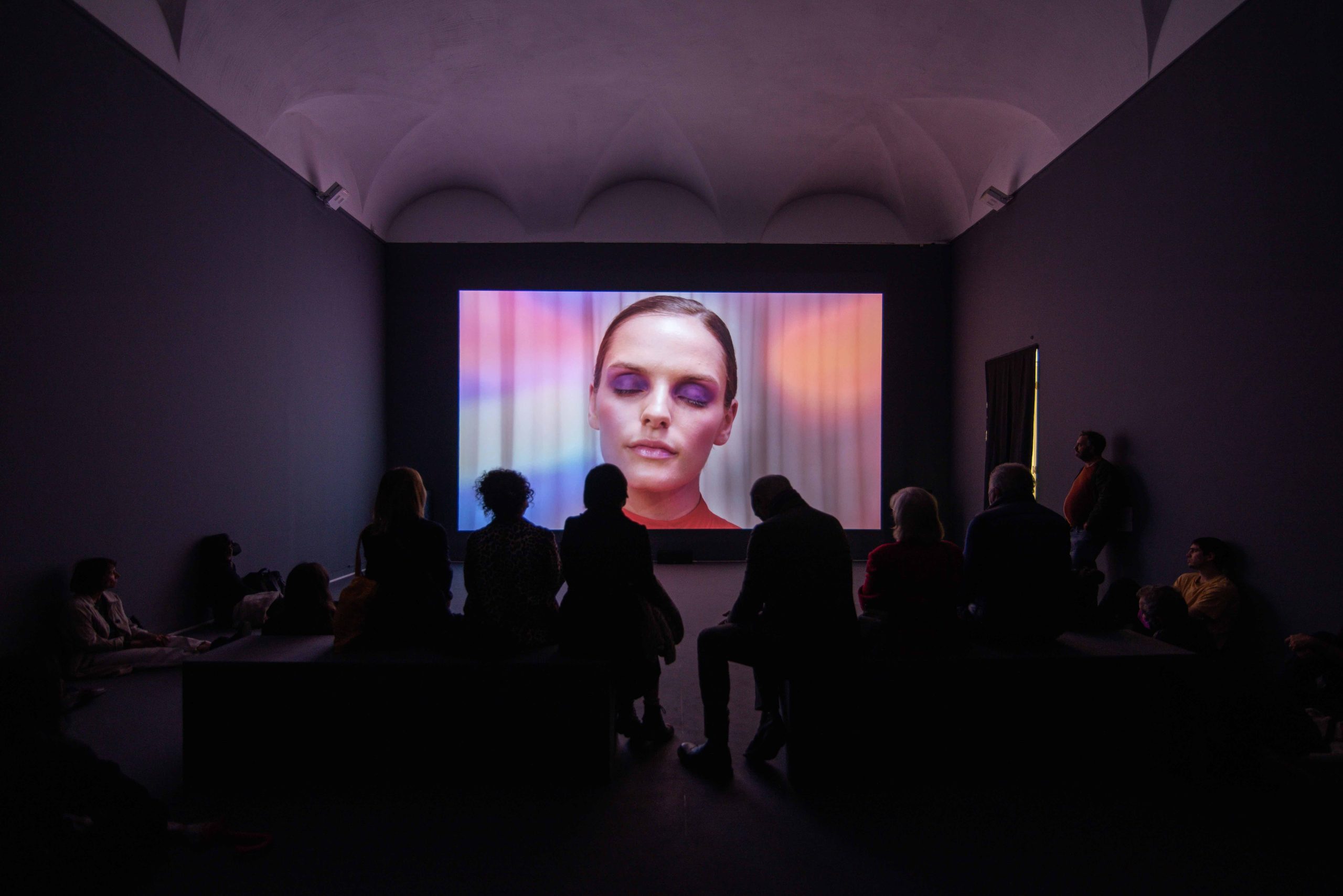
Starr’s work frequently examines the female form; she repeatedly takes us inside the curve, the realm of the mystical and arcane. There we find disembodied hands, eggs, ovular forms, and fleshy, primordial mate- rial. In her performance piece and installation Before Le Cerveau Affamé (2013), a pair of women form membrane-like sculptures out of chewing gum using their breath. Another recurring symbol is the shape of the letter “V,” resembling two legs split apart. Starr first explored the “V” in Big V, (2004) a four-screen video installation commissioned by Leeds Art Gallery and Contemporary Art Society. A “pre-adolescent voyage” through Starr’s com- ing of age in Leeds, the work explores “procession, movement and cor- pora,” as well as “the mysterious power of the Virgin Mary and the female saints on the Catholic schoolgirl.”
What is captivating—and what carries her work into the realm of the mystical—is how Starr takes the strata of memory and makes it physical. All the forgotten, sublimated bits bubble up to the surface. In the performance and installation Moment Memory Monument (2017), she recreates the brain- shaped time machine from Alain Resnais’s Je t’aime, Je t’aime (1968), a film Starr says always fascinated her. “I made it so that I could physically enter this strange sculptural form and take other people on a journey inside it,” explains Starr.
A deep love of film history pervades Starr’s work. But Starr doesn’t merely bring films to life. She filters them through her particular, baroque consciousness, not unlike the DJ who melds and splices familiar sounds and reveals what lurks beneath the surface, what lingers behind the notes themselves. Both Otto Preminger’s Bunny Lake is Missing (1965) and Peter Bogdanovich’s Targets (1968) are referenced and re-worked in her expan- sive and melancholic Bunny Lakes Series (1999-2003). In the original Bunny Lake film, a mother searches for her missing daughter Bunny and encoun- ters doubts as to whether or not she ever existed. The horror of Bunny’s absence permeates Starr’s series, and in combination with the startling violence of Bogdanovich’s film—in which a young Vietnam veteran goes on a killing spree—unsettles. The series also includes a shot-for-shot remake of Kenneth Anger’s 1973 experimental film Kustom Kar Kommandos, titled Bobby Bunny Buffer (2002).
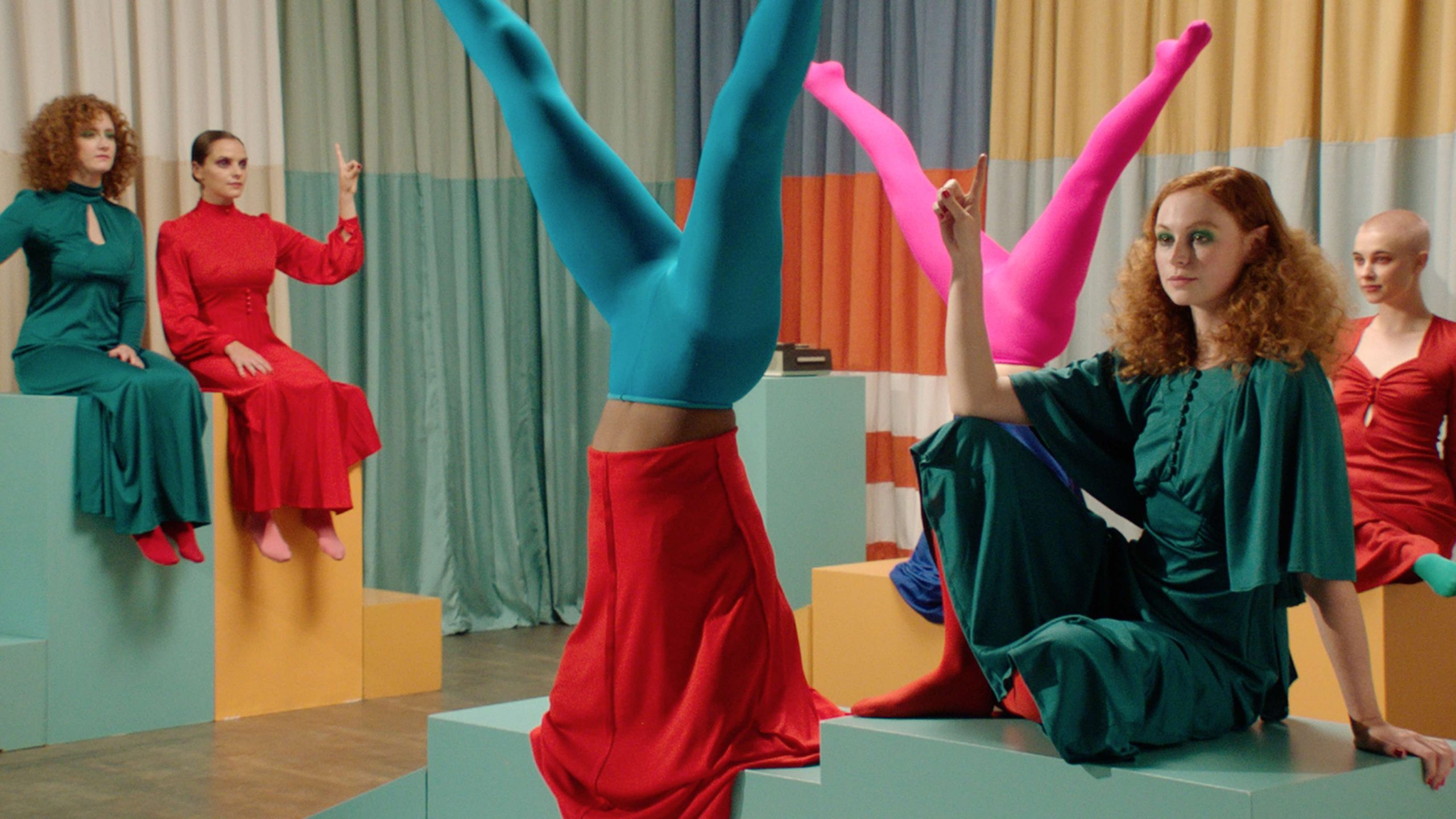
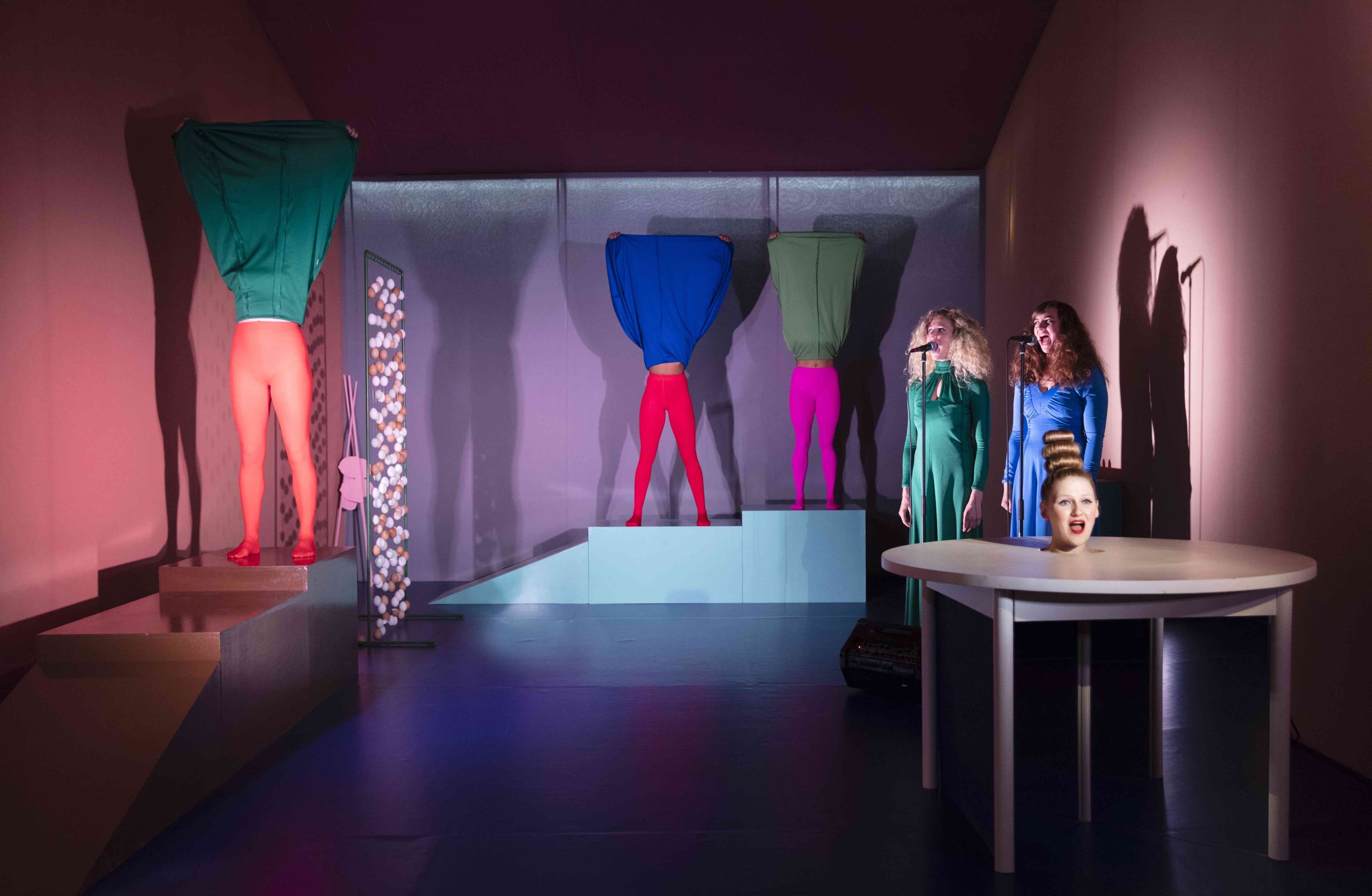
In Visit to a Small Planet (1994), an allusion to the 1960 Jerry Lewis comedy of the same name, Starr re-creates her experience seeing the film for the first time at age 6 by writing the script entirely from memory. And then there is Theda, Starr’s silent film performance and homage to iconic silent film actress Theda Bara, sparked by the star’s uncanny resemblance to her mother. “My earliest memories of film are watching movies on tele- vision as a child,” Starr says. “I soaked up all the 1950s Paramount sound- stage pictures, the early technicolor musicals and black and white film noir. Much of my work stems from filmic memory, either trying to recall a half-re- membered narrative or revisiting a series of filmic scenarios that have had a personal impact on me.” Despite her pivotal role in film history, all but two of Bara’s films have survived. In embodying the late actress and re-imagining her lost reels, Starr provokes a meditation on memory and loss.
Starr’s most recent—and ambitious—film, Quarantaine (2020), follows two young women as they enter a strange alternate universe and encoun- ter Pearl Mama One, a bodiless oracle voiced by soprano Lore Lixenberg. Quarantaine references two films by French New Wave director Jacques Rivette: the labyrinthine Celine and Julie Go Boating (1974), which similar- ly centers on two strangers whose lives strangely intertwine, and the fan- tastical Duelle (1976), whose subtitle is “Une quarantaine,” translating into “forty-day period” in French. For Starr, “quarantaine” connotes spring, a transitory time in which boundaries between worlds dissolve.
All of Rivette’s early work, Starr tells me, expresses love, mystery, and magic. “Women are always centre stage—being good and evil, dark and magical, free, stupid and silly and most importantly not being afraid to be themselves or anyone else they might want to be,” says Starr. “It may seem odd now, in 2022, to say that this was unique, but back in the 60s and 70s it was rare for women to be portrayed this way in movies. Women were of- ten the victim or the seductress. Rivette worked hand-in-hand with the fe- male performers (Juliet Berto, Dominique Labourier, Bulle Ogier, Hermine Karaghuez) to develop the narrative and the script. These women have agency and control inside the story from beginning to end, both in the fic- tion and in its creation.” Starr collaborated with one of Rivette’s “muses,” Hermine Karguez, for Moment, Memory, Monument.
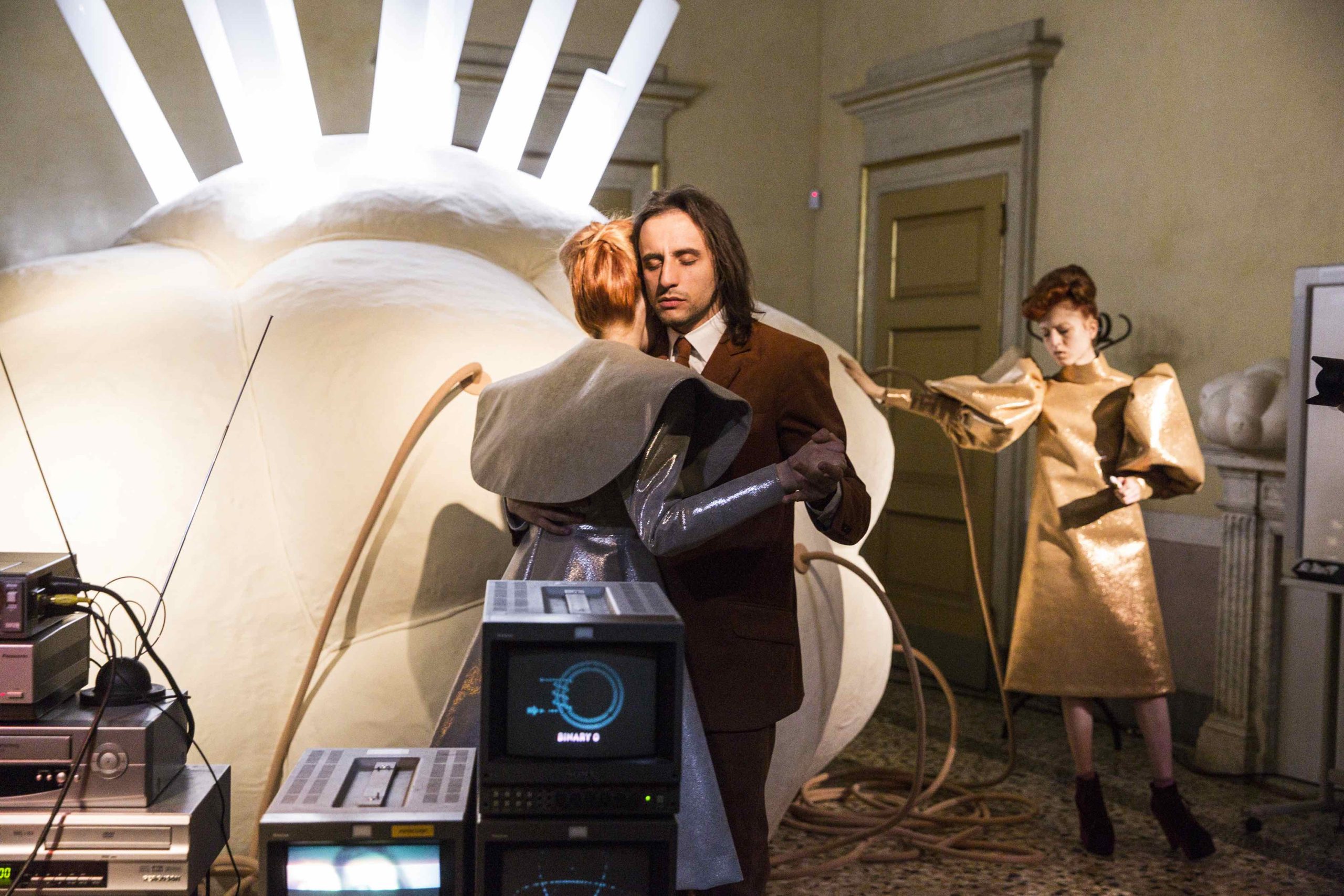
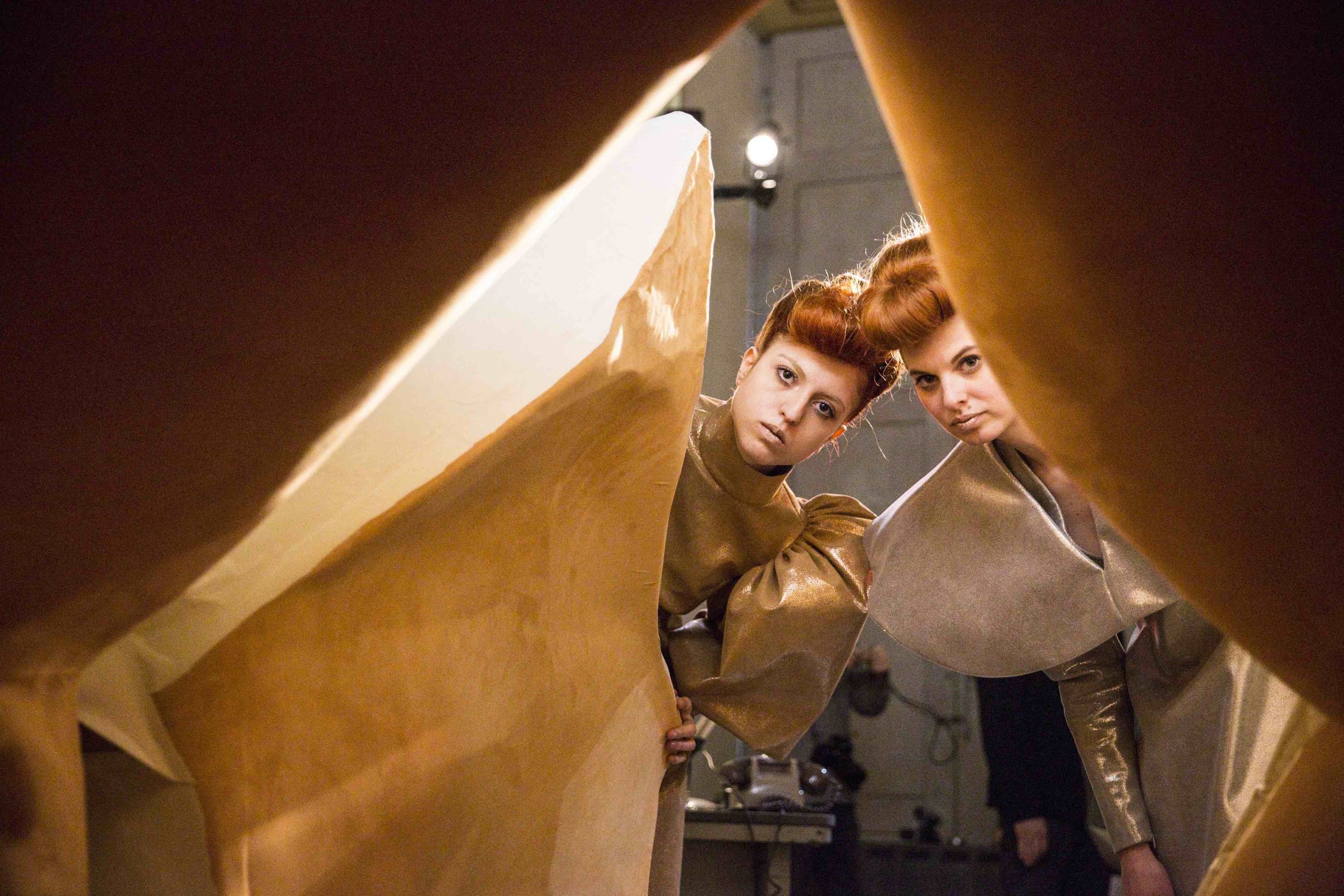
Starr recently completed her first novel, titled The Discreet Dash. “There are elements of my artwork within the story, but [the novel] allowed me to explore ideas and theories in much more detail without worrying how they would manifest physically as real-life objects or artworks,” says Starr. The novel “examines alternate psychological states, metamorphosis and interspecies communication and follows two strangers who are umbilically connected through an old forgotten film.”
After working on Gelato Balleto!, a large-scale, live performance for luxury brand Hermès, Starr would like to do something for the theatre stage. Whatever form she decides to take on next, it will certainly be protean. “I’m always in that infant stage,” says Starr. “Constantly giving birth.”
